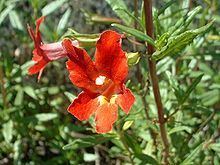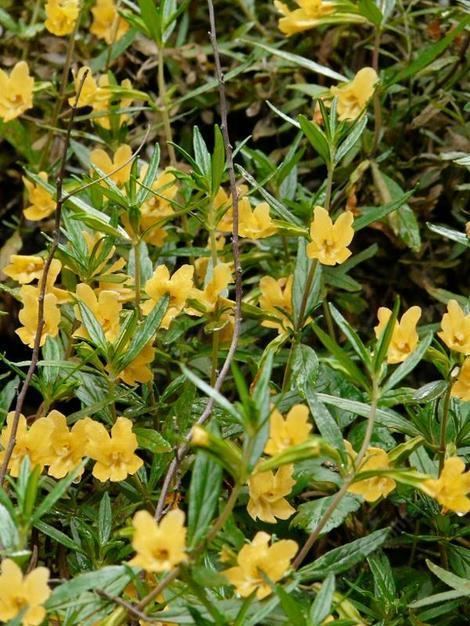Scientific name Mimulus aurantiacus Rank Species | Genus Diplacus Higher classification Mimulus | |
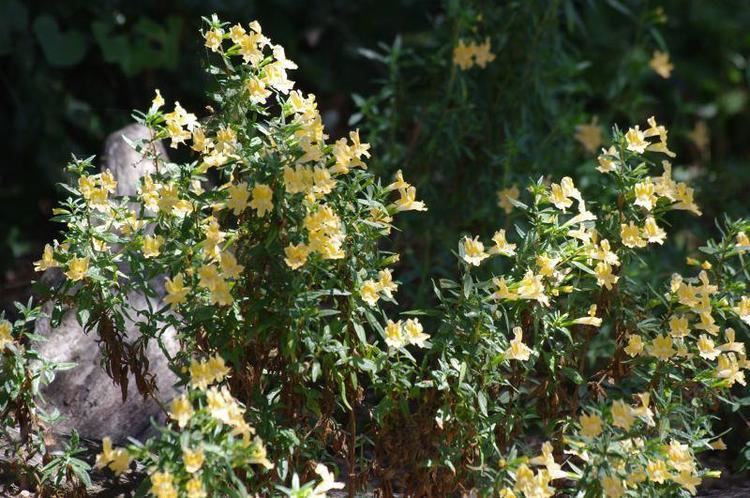 | ||
Similar Mimulus, Baccharis pilularis, Eriogonum fasciculatum, Heteromeles, Frangula californica | ||
Sipping nectar in indian canyon diplacus aurantiacus
Diplacus aurantiacus, the sticky monkey-flower or orange bush monkey-flower, is a flowering plant that grows in a subshrub form, native to southwestern North America from southwestern Oregon south through most of California. It is a member of the lopseed family, Phrymaceae. It was formerly known as Mimulus aurantiacus.
Contents
- Sipping nectar in indian canyon diplacus aurantiacus
- Description
- Cultivation
- Traditional Native American medical plant
- References
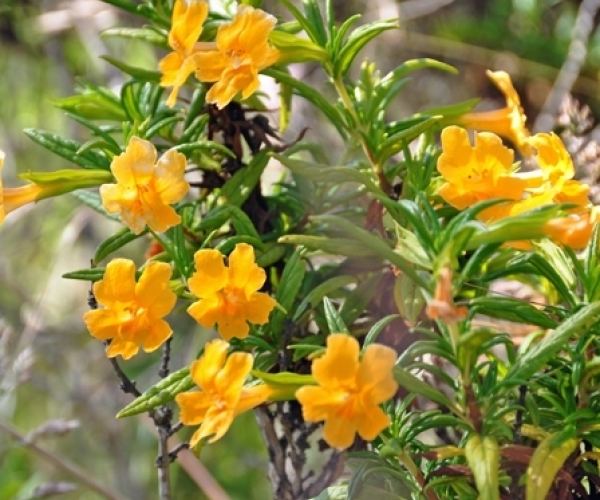
Description
Diplacus aurantiacus grows up to 1.2 meters (4 feet) tall, has deep green, sticky leaves 3 to 7 centimeters long and up to a centimeter broad and flowering stems that grow vertically. The flowers are tubular at the base and about 2 centimeters long with five broad lobes; they occur in a variety of shades from white to red, the most common color being a light orange. They are honey plants pollinated by bees and hummingbirds.

It grows in many climates and will thrive in many types of soil, wet, dry, sandy, or rocky. It even grows in serpentine, a soil that most plants have difficulty thriving in because of its unique mineral composition.
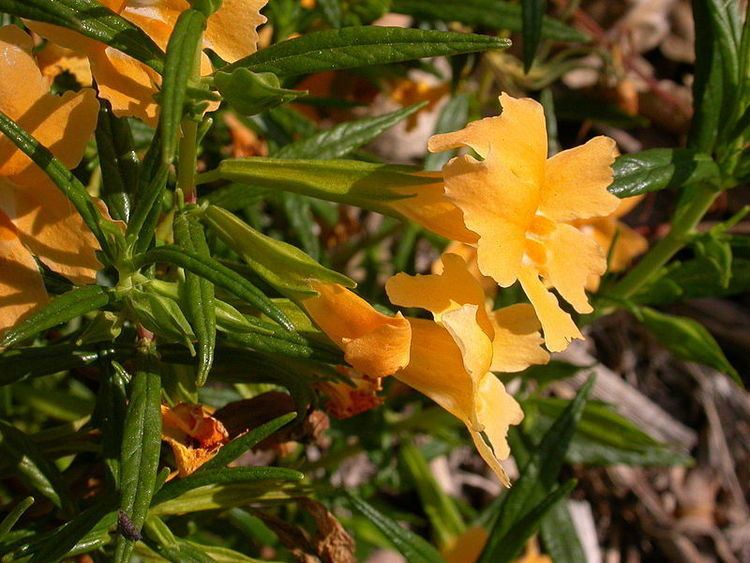
Diplacus aurantiacus is an important host plant for the larvae of the common buckeye butterfly (Junonia coenia) and the variable checkerspot (Euphydryas chalcedona), despite a phenolic resin in the leaves which deter its feeding. This resin also helps the plant retain water in dry environments.
Cultivation
Species and cultivars are used in water conserving, native plant, and habitat gardens.
Traditional Native American medical plant

The Miwok and Pomo Native Americans used the plant to treat minor ailments such as sores, burns, diarrhea, and eye irritation. They used the colorful flowers for decorative purposes.
